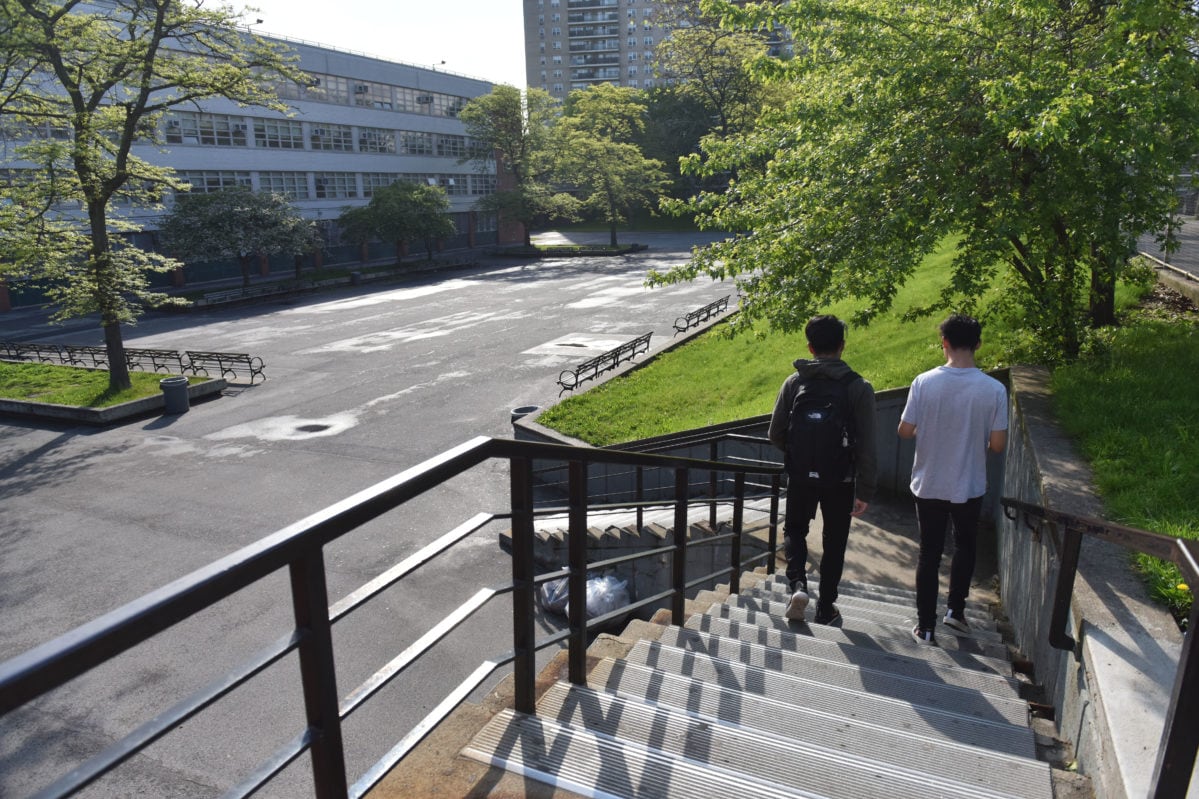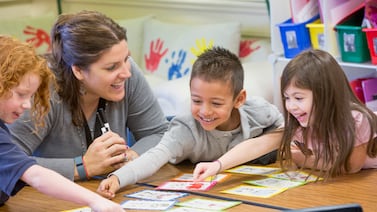New York City families have until Aug. 7 to decide: Will their children opt for fully remote learning this fall or do a hybrid model, attending in person one to three days a week while learning remotely the rest of the time?
After Friday, students who elect the fully remote option will be allowed to return to school buildings only quarterly. Students who attend in-person can opt for fully remote any time.
The education department on Tuesday revealed additional details on what instruction might look like, filling in some gaps of the plan the city submitted to state health officials last week.
Mayor Bill de Blasio said schools are on track to open in September unless the city’s coronavirus infection rate surpasses 3%. (The rate has remained at 1 - 2 % for the past several weeks.) If schools re-open, and the city reaches a 3% positivity rate, schools will close once again. If a student or staffer tests positive for the coronavirus, the city plans to close classrooms or entire school buildings for an investigation, depending on the situation.
Education department officials promise that custodians will sanitize school buildings on a nightly basis, though skeptics point out that many city schools had trouble stocking soap previously. Roughly 8,000 thermometers should be on hand for temperature checks come September, and the department will provide “wellness barriers” for school’s general offices and their main safety desks, officials said. School buses, which typically serve about 150,000 students, will be allowed to operate at 25% capacity, which is why the mayor has encouraged bus-riding families to find other means of transit.
Still, many questions remain as the deadline looms, especially around instruction. For instance, it’s still not entirely clear who will be teaching the fully remote students at many schools. Many schools have still not told their families how many days students will be allowed to attend in-person since they don’t yet know how many students will elect to do so.
How long will the school day be for in-person students?
Though some advocates have called for a longer school day to help students catch up for lost learning, the school day will actually be a bit shorter this fall.
Students will attend school for 5.5 hours a day — nearly an hour less than the typical 6 hours and 20 minute school day. (The amount of instruction is supposed to remain the same, officials said, since there will be no recess, and schools will be required to fold instructional time into lunch.)
How many days a week will children attend in person?
The majority of schools will allow half of their students or a third of students in the building at a given time, meaning that students will attend five days every two or three weeks, respectively.
A school’s schedule is based on various factors, including how many students they enroll, how many choose to learn from home full-time, how much space is in the building, and how many teachers will be permitted to work from home due to medical accommodations. While many schools have informed their communities on their proposed schedules, they have until Aug. 14 to submit their proposals to the education department for approval.
Remembering what days your child attends school could get complicated since in-person days will differ week-to-week. Schools will be required to post these schedules, as well as schedules for live instruction for those learning remotely, in a place that all families can access it, officials said.
What will classroom instruction look like?
Classroom instruction will obviously look much different from what children are used to. Typical classrooms will have between 9-12 students in each class to account for social distancing, and students will not be allowed to share supplies.
Some schools might choose to use non-classroom space, such as auditoriums or cafeterias, for instruction, which would offer more space for more students. Curriculum will also be up to each school, as it normally is.
Students and staff will be required to wear masks inside of school buildings, though there are some exceptions, including for students who cannot wear face coverings for medical reasons. State guidance requires people to wear masks when they are within six feet of each other, in hallways, in restrooms, on buses, and other places students congregate. The city, however, is explicitly requiring students and staff to wear masks at all times unless they are eating or drinking. Students who fail to follow this rule will be sent home to learn remotely full-time “until you are willing to follow the safety protocols,” Chancellor Richard Carranza told his parent advisory panel on Tuesday.
While teachers can travel from class to class, students will stay with the same children and same room every day, to the extent possible.
Who is going to teach fully remote students?
Teachers at a given school will most likely be responsible for teaching their own students who are learning from home full-time, officials said. This, however, could vary based on how many students at a school opt for a fully remote schedule and how many of that school’s teachers work from home full-time due to medical accommodations.
The department has estimated that up to 20% of teachers could qualify for a medical accommodation. The teachers union recently said that roughly 3,000 educators requested accommodations, but it’s unclear how many more will seek exemptions from the classroom for health reasons. School leaders have said it might be a logistical puzzle to match those teachers’ subject expertise with the needed course. For example, a school might need a remote chemistry teacher but only have an English teacher who is fully remote.
Will there be live instruction for fully remote students and on the remote days for those who are doing a hybrid schedule?
The answer is yes, for both.
This marks a shift from education department policy when school buildings first shuttered in the spring, and the city did not require live instruction.
Still, the education department provided few details on how much live instruction each student should receive. For the city’s youngest students, officials said live instruction should happen in “short intervals” — about 15 to 20 minutes at a time. The time can increase for older students, taking “developmental appropriateness” into account. A spokesperson said that more details are forthcoming but did not say when.
How will teachers coordinate material for students in the hybrid model?
Educators, both those who are in-person and those who are working remotely, will get a 30-minute “instructional coordination” period each day, typically before students start, to plan together and make sure they are on the same page for their shared students. Teachers will also have a daily 30-minute prep period, typically at the end of the day, that can be off-site, to do their own instructional planning.
Teachers will work 6 hours and 50 minutes a day, attending one faculty and one grade or department conference a month to provide time for professional development or administrative duties. The time adds up to about the same time overall as prior years when factoring in parent engagement and professional learning.
How will lunchtime work?
Schools will provide grab-and go meals that will be delivered directly to 3K, pre-K and kindergarten classrooms. For all other grades, students must pick up to-go meals at a set location within the building, according to the city’s reopening plan submitted to state health officials. Students can still bring their own lunch. Additionally, students who are learning from home full-time can pick up meals from their school or a building near their home.
Students will likely eat lunch in their classrooms, and that time should be accompanied with instruction similar to the city’s free “Breakfast in the Classroom” program, officials said. Schools will provide disinfectants or wipes to all teachers, and custodians will handle trash, officials noted.
Students will not be allowed to go off-campus for lunch, the city’s reopening plan says. Cafeterias will be off-limits for lunch except for students using that space as a classroom.
Will there be any sports, assemblies, performances and field trips?
The state department of health is not “at this time” allowing school teams to play each other in any sports, and the city said it will issue guidance for the Public Schools Athletic League (PSAL) and the middle school after school physical activity program (CHAMPS) when such programs are allowed to resume. The state is, however, requiring districts to offer some type of physical education course, which can include a virtual class.
Schools must also cancel or limit student assemblies, performances and school-wide parent meetings. Additionally, they must, “to the extent possible,” transition field trips to free virtual opportunities. Officials did not immediately define what limiting such activities will look like.







